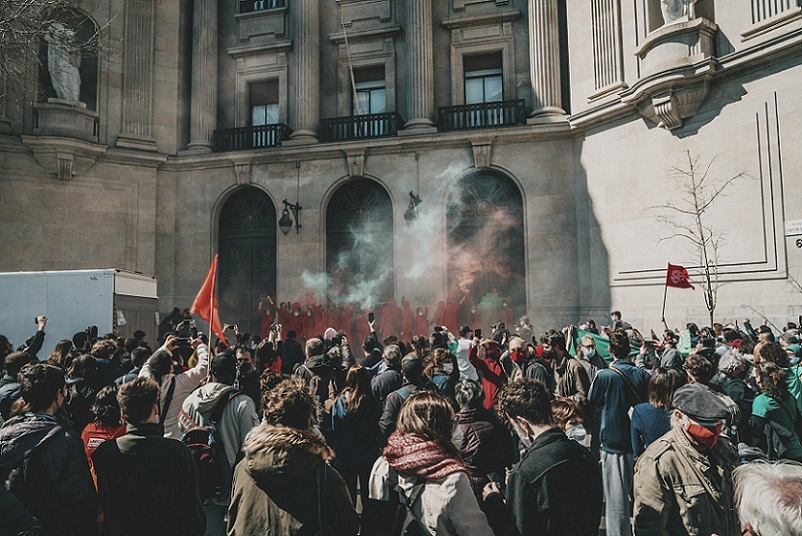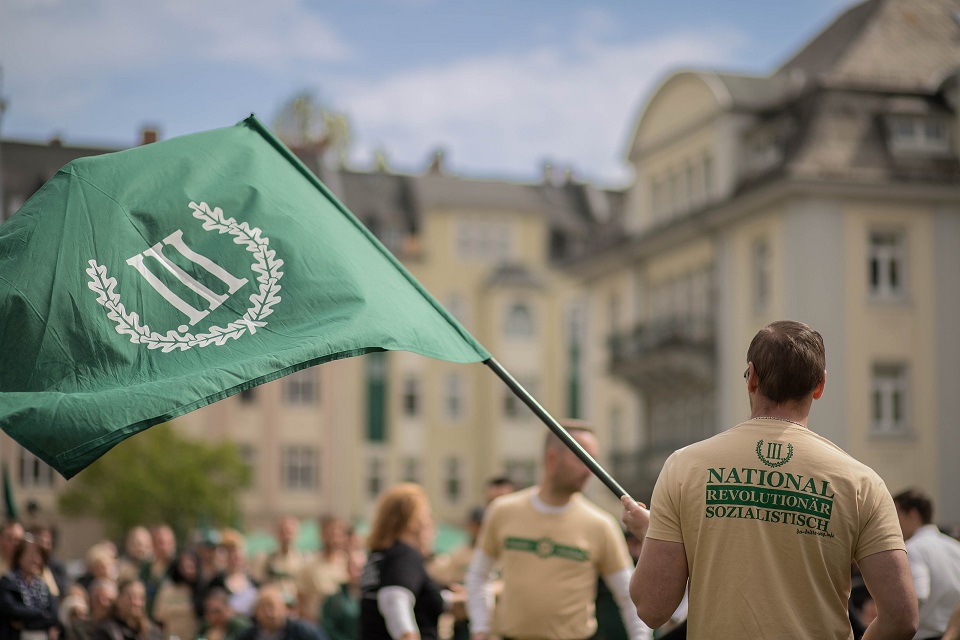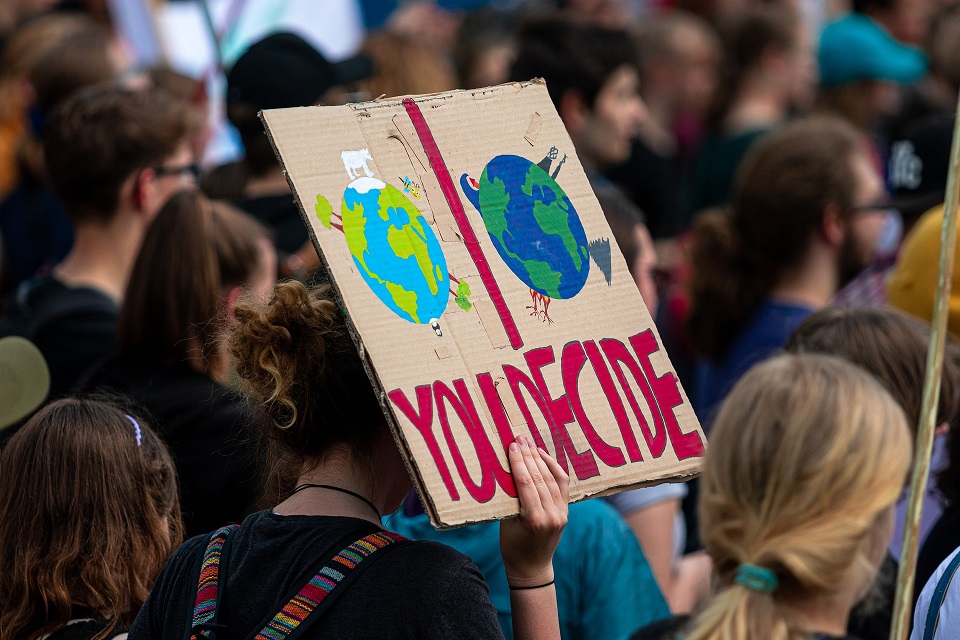The strength of protest that marked the start of 2023, and stepped up in the first half of February, was not a chance occurrence. In addition to projections of poor growth, we face the ever-increasing concentration of wealth, especially among the big multinationals, and highly uneven redistribution of income.
 Sergio Ferrari
Sergio Ferrari
Social protest is intensifying as more and more people take to the streets, particularly in Great Britain, France, Spain and Portugal. In other countries, discontent over unresolved issues is on the rise, such as immigration from outside Europe, which is becoming increasingly restrictive.
The Russia-Ukraine war continues to inflict economic damage and remains the thorn in the side of a continent preoccupied by its bleak financial prospects. All forecasts indicate that even if Europe manages to avoid recession, growth will be almost non-existent this year, real wages will fall and the already weakened welfare state will take a further beating,
For several weeks, France has been witnessing some of the most spectacular citizen protests in recent years. Since 19 January, tens of thousands have taken to the streets to protest against proposed pension reforms that would gradually raise the retirement age from 62 to 64 by 2030.
The working classes will bear the economic brunt of President Emmanuel Macron’s proposed reforms, particularly those who start work at an early age, at 18, 19 or 20 years old.
 At the same time, the poster companies for big capital in France, including Total Energies, Axa, Crédit Agricole, Carrefour, BNP Paribas and Electricité de France, are accumulating significant profits.
At the same time, the poster companies for big capital in France, including Total Energies, Axa, Crédit Agricole, Carrefour, BNP Paribas and Electricité de France, are accumulating significant profits.
On 11 February, according to organisers, more than 2.5 million people participated in the fourth inter-union demonstration (1 million according to official figures).
Repeated strikes in various sectors, including the railways, have rendered France partially paralysed in some of its day-to-day activities, such as transport, education and refineries. Spain and Portugal were also the scene of mounting social unrest during the second weekend in February. On the very same Saturday 11, more than 250,000 people affiliated with teachers’ unions marched through Lisbon (which has a population of just over half a million), demanding fundamental improvements to the educational model and pay policy.
The following day, almost a million protesters took to the streets of Madrid and other cities and regions throughout the country, for example Galicia, to demand substantial improvements in the health system and the working conditions of health workers. In Madrid, protest organisers denounced the fact that one in four people experiencing a health problem do not have access to primary care consultations.
 Meanwhile, in Great Britain, on 1 February, some 300,000 teachers in 23,000 schools heeded the National Education Union call to strike. According to government figures, 51.7% of state-funded schools were partially or completely closed on that day. Some 70,000 professors from the University and College Union also took strike action, grinding the country’s 150 universities to a halt. Trade union sources estimate that more than 500,000 workers took industrial action on that day.
Meanwhile, in Great Britain, on 1 February, some 300,000 teachers in 23,000 schools heeded the National Education Union call to strike. According to government figures, 51.7% of state-funded schools were partially or completely closed on that day. Some 70,000 professors from the University and College Union also took strike action, grinding the country’s 150 universities to a halt. Trade union sources estimate that more than 500,000 workers took industrial action on that day.
The following Monday, 6 February, saw the start of one of the biggest strikes in the history of the British public health system, involving tens of thousands of nurses and paramedical staff. Their key demand: pay increases to counter double-digit inflation, which has reached the highest rate in 40 years.
The second day of strike action was described as the biggest in the 75-year history of the National Health Service (NHS) by various European media outlets. From Tuesday 7 to Friday 10, nurses, followed by physiotherapists, then ambulance staff staged further walkouts.
Civil servants and railway workers also went on strike, in what is considered the largest social protest in the last decade. In addition to expressing its total unwillingness to negotiate with the unions, the government plans to consider new laws limiting the right to strike, thereby creating a spiral of confrontation with no apparent escape.
 Migration is another hot topic, both in the Swiss Confederation and in the rest of Europe. It is at the very heart of society’s political-ideological debate, dividing the xenophobic far right from the progressive and humanist sectors, and reflecting some of the fundamental tensions that envelop the Old World.
Migration is another hot topic, both in the Swiss Confederation and in the rest of Europe. It is at the very heart of society’s political-ideological debate, dividing the xenophobic far right from the progressive and humanist sectors, and reflecting some of the fundamental tensions that envelop the Old World.
A demonstration that took place in Bern on the first Saturday in February is testament to this. Protesters gathered in the Federal Square, opposite the Swiss government headquarters, chanting the slogan “Stop Dublin” to denounce the country’s abusive application of the 1990 Dublin Convention. This convention, which has been adapted a number of times, was agreed between the countries of the European Community, Iceland, Switzerland, Liechtenstein and Norway to regulate applications for political asylum. It allows asylum seekers to be returned to the signatory country through which they entered the European continent.
While not massive, the mobilisation in Bern was one of the largest in recent times in relation to asylum. It demanded greater understanding and flexibility from the government, which takes advantage of certain prerogatives of the Dublin Convention to expel asylum seekers, preferably to Croatia.
 Protesters also denounced the degrading and violently repressive measures used against migrants in Croatia, particularly those arriving from sub-Saharan Africa and the Middle East.
Protesters also denounced the degrading and violently repressive measures used against migrants in Croatia, particularly those arriving from sub-Saharan Africa and the Middle East.
According to Amnesty International, last year Switzerland asked other European states to take responsibility for 4,936 asylum seekers under the Dublin Convention, almost 1,000 more than in 2020.
(Translated by Rebecca Ndhlovu – Email: rebeccandhlovu@hotmail.co.uk) – Photos: Pixabay












.jpg)












